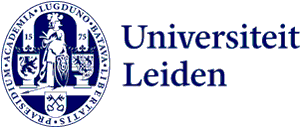
From a fossil to an animal skin: as a museum, do you let the original pass through the hands of your visitors, or a replica?
Educators in European science museums sometimes think rather differently about the definition of an 'authentic' object. They think carefully about how they present those objects to teach visitors something or make them curious. This was shown in research by the Science Communication & Society department. ‘Research on object use was perhaps focusing too much on authenticity.’
It used to be unthinkable: touching all kinds of objects in a museum. Nowadays, it is the ultimate way to arouse the visitors' interest, understanding and curiosity. Sometimes this cannot be done with the real object and museums use replicas. A frequent comment from visitors is: “Is it real?” Previous research shows that visitors are most amazed by real objects, but also understand that sometimes replicas are necessary. Anne Land-Zandstra, together with now alumni Sanne Romp and Tirsa de Kluis, wanted to know how the educational staff at museums think about using original objects or replicas in their education activities.

Surprise visitors or teach them something
Romp and De Kluis, who did the masters specialisation Science Communication & Society, conducted interviews and questionnaires to education staff at several dozen science museums in the Netherlands and the rest of Europe. They approached natural history museums or museums with scientific instruments.
They found out that educational staff find the use of authentic objects very important to amaze or teach visitors something, but also that they do not necessarily choose authentic objects. They mainly look at what suits the goals of the particular activity. Sometimes this means they are better off choosing a replica, if visitors are allowed to touch the replica but not the authentic object, for example.
Authentic: natural, old, or...?
The researchers also found out that the definition of ‘authentic’ turns out to be very tricky. For instance, some museum educators think that an authentic object can only be of natural origin and not man-made. Others think a long history is essential, or that the object is unique. Some even felt that a replica can sometimes also be authentic when it is an exact copy of the original, for example.
Research focused on authenticity too much
This makes the discussion about choosing authentic or not rather difficult. But is this actually a problem? The researchers don't think so, they write: ‘This result implies that research on object use was perhaps focusing too much on authenticity. It would be better to concentrate more on the way in which objects are presented.’
Understanding science, generating interest in science or curiosity in general: that's what science museums are all about. ‘In this field of research, replicas are often assumed to be less valued than authentic objects,’ the authors note. ‘But we need to pay particular attention to the variation in object types, the stories behind them and what you want to convey to the public.’
The research was published on 2 November in Public Understanding of Science: Science museum educators’ views on object-based learning: The perceived importance of authenticity and touch
Text: Rianne Lindhout
Photos: Naturalis Biodiversity Center
